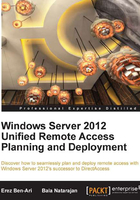
My network's fine, so if it ain't broken, why fix it?
When the good folks at ARPA developed the protocols that our networks rely upon, they designed the 32-bit IP number system, which back then provided an IP to every single living man, woman, and child on the planet, with almost a billion addresses to spare. One thing they didn't count on was that the definition of a computer and a network would expand so much. Besides the fact that the world population has doubled since then, we all have a computer at home, one at work, a smart phone, and often some tablet stashed around the house somewhere too. It's not unusual to see a home network using 10 or more IP addresses. As a result, the entire range of 4,294,967,296 addresses has long since been allocated years ago, and since then, obtaining a public IP has been relatively hard and expensive.
An interim solution in the form of NAT (Network Address Translation) has been developed, and has been a viable workaround for pretty much everyone, but NAT has its own disadvantages. For one thing, NATing an address changes the headers in packets, and that causes problems with highly secure protocols such as IPsec. It also presents problems to certain application-level protocols such as FTP. Another challenge is performance, as the packet's header changes take time and resources. Ultimately, millions of businesses world wide are using NAT successfully, but one might consider it more of a workaround than a real solution.
IPv6 offers a solution to everything, as well as a design that is thought-out ahead significantly. For one, it allocates 128 bits for addressing, which provides us with an immense number of addresses. The actual number is 3.4×10^38, which gives every human being billions of IPs of his own. In fact, it would be virtually impossible to run out, as we would run out of space on the planet before we run out of addresses.
There are, of course, many other advantages to IPv6 over IPv4, such as built-in IPsec security, built-in address auto-configuration, improved performance for mobile routing, improved performance for routers, and more. We won't go into full details here, but we're sure that if you wanted to know all that, you'll have already found your way into any one of the lovely 600-page books dedicated to IPv6.